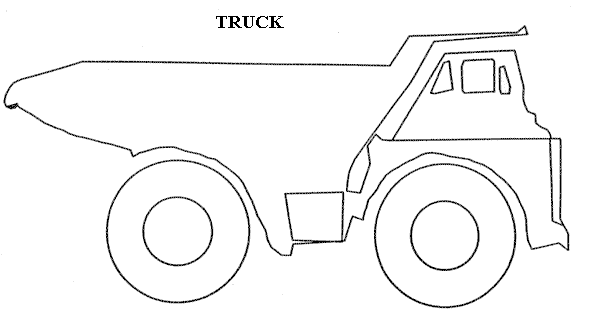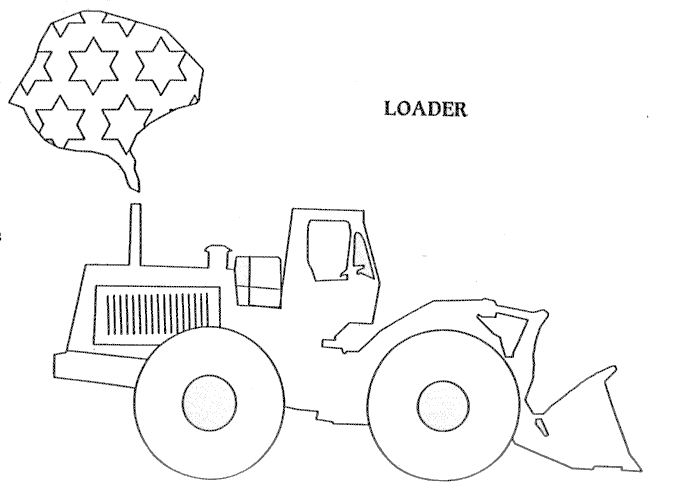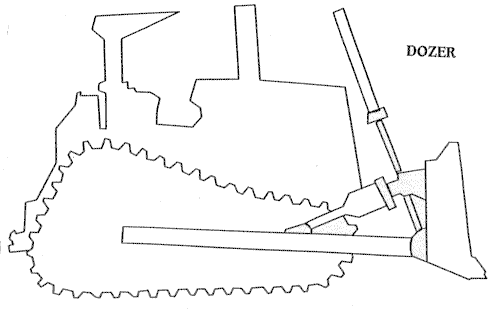
Click here for a printable version
Title: Mining With Blocks
Time: 1 class period
KERA Goals: 2.1
Materials: Several of 3 different color blocks (can be cardboard boxes or wooden blocks - anything that can be stacked)
Objective:
The purpose of this activity is to gain a basic knowledge of mining and reclamation.
Background Information:
Mining is an important industry. Mining ores and coal provides resources we need in everyday life. Coal, for example produces more than half of the electricity used in the United States. Unfortunately not much information is known by the public concerning actual mine procedures and reclamation processes. This activity is designed to provide some basic information on mining processes and allow some discussion of the different methods to accomplish reclamation.
The colored blocks are used to represent 3 different material types that a mining company may encounter. The movement of these blocks shows how the mining company must first remove the topsoil and stockpile it for reclamation. Then the overburden can be removed, and the coal mined. The coal is mined and stockpiled, and then sent to a processing plant and sold. Once all the coal is mined then any one of many reclamation alternatives can be performed. In this case, it would be to place the waste in the mine area. Again, this is only one possible alternative for reclamation, which cannot always be accomplished at every mine site. This is a simplified mining procedure.
For reclamation in this instance, the material is placed back in the mine area. The material must be placed in a specific order to get the full benefit of reclamation. For example the overburden blocks are returned to the mine area first, then the topsoil blocks are returned. This is because vegetation will grow better on topsoil than on waste rock, although in many cases some vegetation will grow on the waste rock. In some instances the waste rock is crushed and used as a topsoil alternative.
Sometimes reclamation means doing work that results in the land being put to a more beneficial use than it was in its original state. Some possible beneficial uses are land for grazing cattle or sheep, farmland, fisheries, recreation areas and flat land for building sites. Generally, the mining company presents its plans for reclamation to the governing agency. The agencies make the final decision for what reclamation actually takes place: however, some negotiation may take place between the mining company and government agency.
Before a mine can be operated, it must have an approved Reclamation Plan (permit) and a Reclamation Bond (money) which will guarantee funds for reclamation, should the company go bankrupt.
Activity:
Three colors of blocks should be stacked at the front of the classroom. One color is designated as topsoil, the other two colors will be used to designate coal and overburden. The coal and overburden blocks may be stacked in any random order with a solid row of waste blocks on top. Then the topsoil blocks can be placed on top of the solid row of waste blocks. See sketch below. This area will be the mine. The blocks can be cardboard boxes, wooden blocks or anything else that will stack safely.
| T- Topsoil | T T T T T T T T T T | T- Green Blocks |
| W- Waste | W W W W W W W W W W | W - Blue Blocks |
| O- Ore | W O O W O O O W W W | O- Red Blocks |
| O W W W O O O W O O | or select your own colors | |
| W O O W O W W W O W | ||
| W O O O W W O O O W |
Two students should be selected to be loader operators and three students should be selected to be dozer operators. The remaining students will be truck drivers. The ratio of loader operators to truck drivers should be, approximately 4 to 7 truck drivers for each loader. If necessary an additional student may become a loader operator. Note that drawings of the equipment are provided for the students to wear while they are acting as that piece of equipment.
Three different areas in the classroom need to be designated: one as an Coal Stockpile, one as an Overburden stockpile and one as a Topsoil Stockpile. These areas will be designated using the color of the blocks stacked at the front of the room.
The two loader operators need to stand at opposite ends of the stack of blocks (mine area). The truck drivers need to be divided and placed in a line by each loader operator. The dozer operators need be placed one at each dump or stockpile.
The activity is ready to begin. Please caution all the students to walk not run since this is not a race. The loader operator will pick up a colored block and the truck driver will carry the block to the correct location. At the dump or stockpile the truck driver will hand the block to the dozer operator. Then the truck driver will return to his same loader and wait in line for a new block (load). The dozer operator once handed the block will place the blocks neatly to create a new stack of blocks.
Once mining is completed please stop and look at your results. You have moved material and created 3 alternate areas of material. Now reclamation begins. The loader operators and trucks move to the waste dump and the dozer operators move to the mine area. One dozer operator will need to become a truck driver so that only two dozer operators are working in the mine.
Once again the loader operator picks up a block and hands it to the truck driver. The truck driver carries the block back to the mine area and hands the block to the dozer operator. The dozer operators place the blocks to form a new stack and the truck drivers return to get another load (block).
Once all the waste has been hauled then the loaders move to the Topsoil Stockpile. It's important at this point that when the dozer operators place the topsoil blocks that these blocks are put on top of overburden blocks, not along side. Repeat Step 7 until all the topsoil has been placed in the mine area on top of the overburden blocks.
Discuss what happened. Notice that the coal was not placed back in the mine area. Why is that? Did the stacked blocks look any different than at the start of the activity? Was the reclamation process difficult? Do you think it would cost more money to return the material? Would there be an alternative to returning the blocks back to the mine area? The discussion should include that reclamation also involves revegetation and the possibility that the land could be turned into something of more benefit than its previous use.
Review:
The activity allowed each participant to perform a simplified version of mining. The activity also allowed each student to see one alternative for a very simplified reclamation process.
This activity could be run with another activity called "Forest in a Jar" to simulate vegetation growth and change.



Provided by The Society for Mining, Metallurgy, and Exploration, Inc.